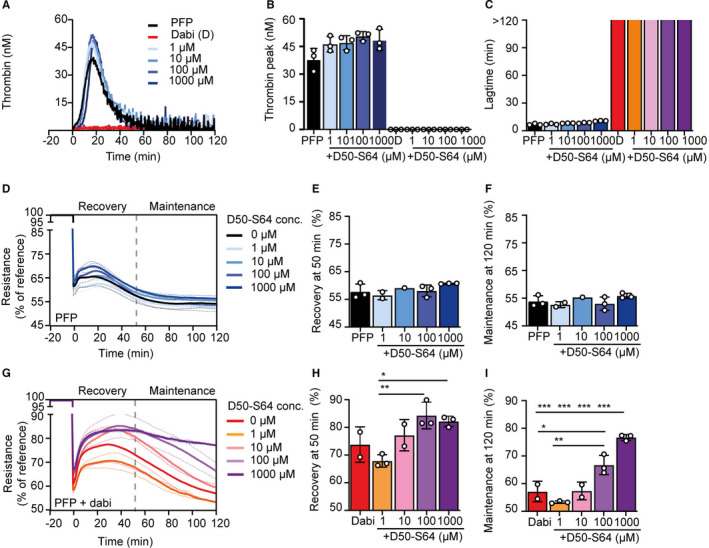FIGURE 5.

The effect of peptide D50‐S64 on thrombin generation and barrier function. A, Representation from one plasma‐donor and an endothelial cell donor of thrombin generation (nM) over time in platelet‐free plasma (PFP), PFP supplemented with dabigatran (D or dabi), peptide D50‐S64 (1–1000 µM), or dabigatran plus peptide D50‐S64 (1–1000 µM) incubated on tumor necrosis factor‐‐stimulated human umbilical vein endothelial cells as source of tissue factor and phospholipids. B, Quantification of thrombin peak values (mean ± standard deviation [SD] in nM) and (C) lag time (min) showed no effect of peptide D50‐S64 compared to PFP alone and no extra effect in combination with dabigatran. D, An example of electric cell‐substrate impedance sensor (ECIS) recovery curves over time (mean values of triplicate wells with SD in dotted lines) in the absence and (G) presence of dabigatran (PFP + dabi) in combination with increasing dose of peptide D50‐S64 (1–1000 µM). E, Quantification for the recovery phase (at 50 min) and (F) the maintenance phase (at 120 min) showed no effect of peptide D50‐S64 on barrier recovery in the absence of dabigatran. H, In the presence of dabigatran, peptide D50‐S64 had no effect on the recovery phase of the barrier, but (I) in the maintenance phase addition of peptide D50‐S64 showed a dose‐dependent rescue of the barrier function. Data represent mean ± SD from triplicate wells; means were compared using one‐way analysis of variance. *P < .05, **P < .01, ***P < .001
